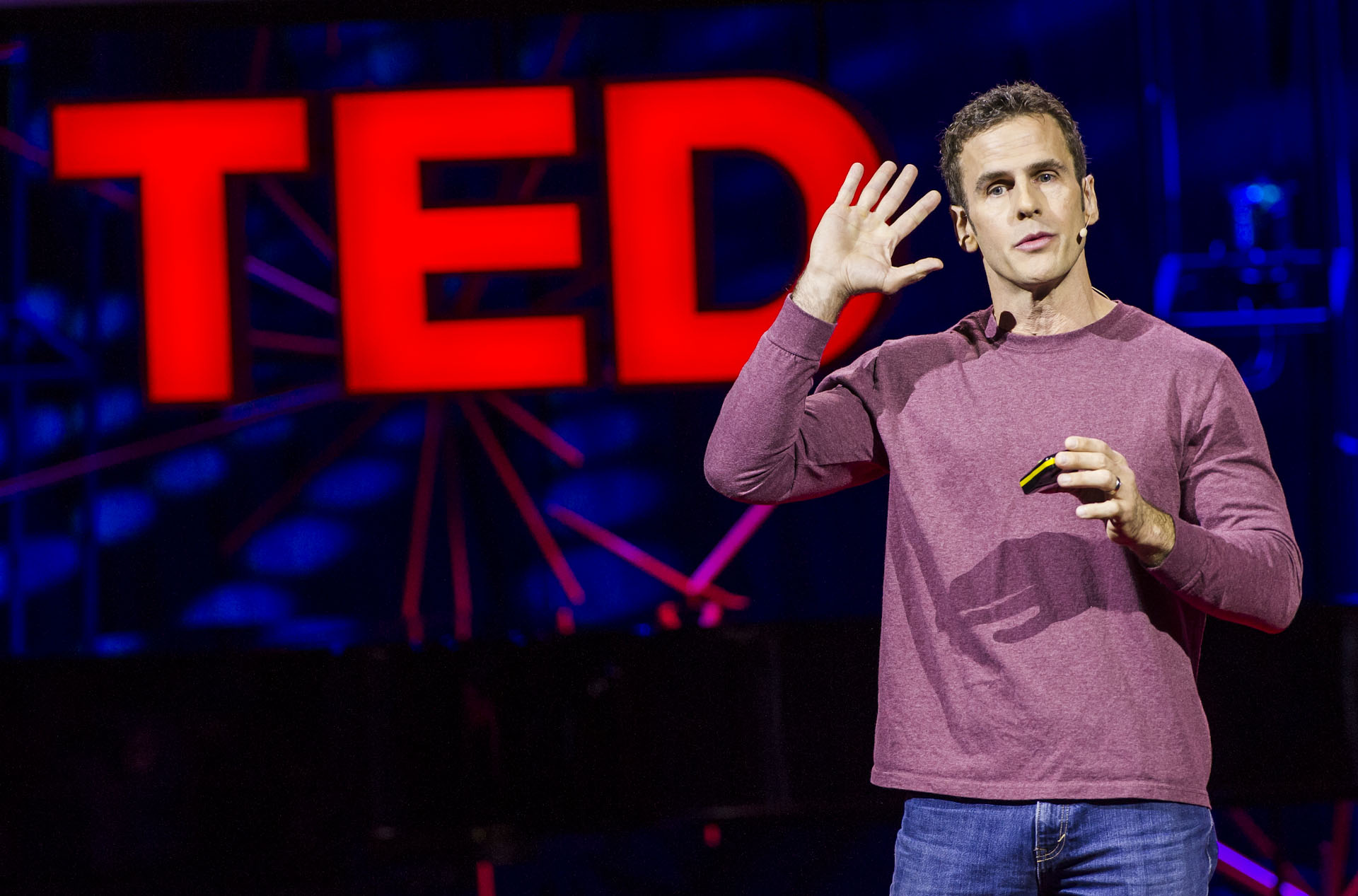Read Montague introduced an idea worth spreading at TEDGlobal 2012

Read Montague asked for a show of hands: How many audience members possessed a behavioral superpower? “Oh! I actually see hands!” he said. “TED is a special conference.”
Montague’s quip came in the first minute of his presentation last week at the TEDGlobal 2012 conference in Edinburgh, Scotland. Montague, director of the Computational Psychiatry Unit at the Virginia Tech Carilion Research Institute, kicked off the conference’s “Misbehaving Beautifully” session, which focused largely on mental illness.
Montague took as his topic the brain’s subtle, yet masterful microprocessing systems. The few hand-raising audience members were not the only ones to possess a superpower, he contended.
“We all have a behavioral superpower in our brain,” he said. “We can deny every instinct we have for survival for an idea – for a mere idea. No other species can do that.”
Montague used as an example the cult Heaven’s Gate, whose members committed mass suicide in 1997 in their quest to reach an alien spacecraft they believed to be trailing the Comet Hale-Bopp.
“It was an incredibly tragic event,” Montague said. “But the point here is they were able to deny their instincts for survival using exactly the same systems that were put there to make them survive.”
Those systems are deep in the brain and involve dopamine, a neurotransmitter, Montague said, “that makes us chase sex, food, and salt – that keeps us alive.” Dopamine drives valuation mechanisms in the brain, allowing us to navigate our world, whether foraging for berries or interacting in a complex social exchange.
Montague identified two advancements that now allow scientists to probe the role of the human brain’s deep processing systems in making valuations. The first is functional magnetic resonance imaging, a noninvasive technique that allows scientists to use microscopic blood-flow measurements as a proxy for brain activity. This discovery “revolutionized cognitive science,” Montague said, but omitted an important element: other people. Isolating mental functions in individuals is important yet incomplete, he said, because “even when we’re alone, we’re profoundly social creatures.” Montague noted, in fact, that we cannot really know ourselves until we interact with others.
The second advancement is one that Montague and his team invented – hyperscanning, a technique that enables subjects in different brain scanners to interact in real time, whether across rooms or across continents. Hyperscanning allows scientists, Montague says, to “eavesdrop on brain activity during one of the most important acts we do as humans – interact with other humans.”
People are exquisitely sensitive to the social gestures of others, Montague said, and understanding that sensitivity may provide important clues to mental disorders. At the heart of many mental disorders is a deficit in the ability to interact with others. And in these cases, using people with good mental health as coal-mine-dwelling canaries may be one of our most promising avenues for capturing the subtle behavioral hallmarks of mental disease.
This approach, said Montague, is “our way of redefining with a new lexicon – a mathematical one, actually – the standard ways we think about mental illness.”
Several of the speakers who followed Montague illustrated the critical need for tools that allow mental illness to be better understood. Comedian Ruby Wax, for example, touched on her own experience with the stigma of mental illness. “Your friends say, show me the lump, show me the X-rays, and of course you have nothing to show. … How come when people have mental damage, it’s always an act of mental imagination? How come every organ can get sick and you get sympathy – except the brain?”
Montague, a physics professor, has long worked to bring mathematics and computation to mental health, said Michael Friedlander, executive director of the Virginia Tech Carilion Research Institute, in introducing a Roanoke-based simulcast of Montague’s talk. “Read’s use of rigorous, computationally based analysis of brain function and his invention of hyperscan technology have led to the development of a new field, computational psychiatry, which has been shaking up the world of psychiatry,” Friedlander said. “It has already led to tremendous, exciting new insights into a range of psychiatric disorders, such as autism spectrum disorders, borderline personality disorder, and addiction.”
Computationally based insights may one day allow psychiatry to achieve the diagnostic precision of such fields as cardiology, Friedlander added. “With an angiogram, for example, a cardiologist can say, ‘Your left anterior descending artery is blocked by 73 percent; you need a stent.’ We’re hoping Read’s work will bring such precise measurements to psychiatry, to enhance both diagnosis and treatment.”




